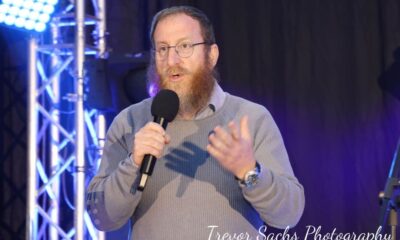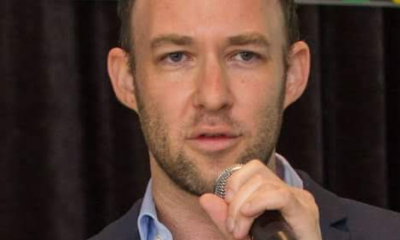
Israel

We have every reason to celebrate Yom Yerushalayim
Our relationship with the city of Jerusalem begins close to the beginning of the recorded history of the Jewish people.
Our forefather, Avraham, is described in the Book of Genesis as going to battle with the four kings who had kidnapped his nephew, Lot. Upon his successful return with Lot, Avraham is greeted by Melchizedek, the King of Shalem, with wine and bread in celebration and recognition of his bravery, courage, and brotherly affection.
The city of Shelem is identified in rabbinic literature as the place of the modern city of Jerusalem. Thus begins the bond of the children of Avraham, Yitzchak, and Yaakov with the city of Jerusalem that plays such a central role in our lives.
The actual name, Jerusalem, enters onto the Biblical stage when King David acquired the land that would become the Temple Mount from Arvanah, the Jebusite who used it as his threshing floor. King David did it to establish that place as his royal city, the capital around which all the tribes of Israel would be united. He then gave it the name “Jerusalem”. However its spiritual uniqueness manifests in the buidling of the Beit HaMikdash (the Holy Temple) by King David’s son, King Solomon.
Rabbi Yosef Dov Soloveitchik expressed the idea that Yerushalayim was endowed with a unique kedusha (holiness) called kedushat shechina – the holiness of G-d’s presence. Maimonides said the holiness that emerges from G-d is endless and infinite. It’s a kedusha that lasts forever. The Temple Mount and surrounding city of Jerusalem are the neshama (soul) of the Jewish people and the spiritual centre of the Jewish homeland.
At the start of June 1967, Israel was in the grip of anxiety and fear. The threat of an all-out Arab attack on the 19-year-old fledgling state caused panic. In action reminiscent of war-torn Europe only 30 years earlier, people sent their children out of Israel amid pessimistic forecasts of tens of thousands of casualties.
Foreign Minister Abba Eban ran from country to country, finding no-one that would help us and in a similar refrain from today’s “From the river to the sea” chant, Egyptian leadership threatened to throw all the Jews in Israel into the Mediterranean. Prime Minister Levi Eshkol was heard to stammer lamely in a radio broadcast that the atmosphere was one of terrible despair.
As we have seen in the war in Gaza in 2024, in a series of miraculous battles and airstrikes in the six days of June 1967, the soldiers of the Jewish state fought with everything they had. Eventually, the surrounding hills of Jerusalem, the City of Hebron, and other important strategic landmarks were captured. But the words of General Motta Gur, “Har habayit beyadeinu” (the Temple Mount is in our hands) indicated our physical and spiritual victory.
The joy was so great, we sometimes forget the despair and fear that preceded it.
28 Iyar will forever stand as the day in which we celebrate the reunification of the city of Jerusalem in the hands of Am Yisrael (the Jewish people). It marks a most significant day in the modern Jewish calendar. A day of celebration, and a day of deep gratitude.
Fifty-seven years ago, at the cost of many lives and with the experience of many miracles, we were given back the gift of davening at the Kotel, of enjoying the sights and sounds of our ancient holy city, and the ability to rebuild it into a modern icon.
In doing so, we witness the fulfilment of the prophecy of Jeremiah, for we have merited to hear once again the sounds of joy and celebration in the city that was desolate. This is a cause for celebration.
Yet, this year, our celebration is tempered as the echoes of “Free Al Quds!” resounds in our national psyche, accompanied with the horrific images of the Black Shabbat of 7 October.
Let’s not forget that for us, this is almost a normal situation. For the Jewish people, a place somewhere between absolute destruction and complete redemption is the place in which we are able to navigate the paradox of our emotions.
The Talmud teaches us that 10 measures of beauty were sent from heaven to the world, and nine of these were kept by Jerusalem, the rest spread into the world. The beauty of our capital city, of our holy, sanctified centre is that it’s the place from which we can draw hope. The place in which we can dance and cry simultaneously.
Jerusalem is the place where our history of brotherly love began, as Avraham saved Lot, the first recorded hostage from the cruelty of his captors. It’s the place where he was prepared to bring his son as a sacrifice. These lessons are the story of our beloved city. They are written in its walls and its very foundations.
On Yom Yerushalayim, we celebrate the miracle of the unification of the dynamic, vibrant, metropolitan, beautiful, and sanctified city of Jerusalem. The city we share with G-d Himself.
- Rabbi Jonathan Altman is the rabbi of Yeshiva Mizrachi Shul in Glenhazel.











Gary
June 6, 2024 at 5:22 pm
The Jews will not ever give up Jerusalem anymore than the Muslims will give up Mecca or the Catholics the Vatican,